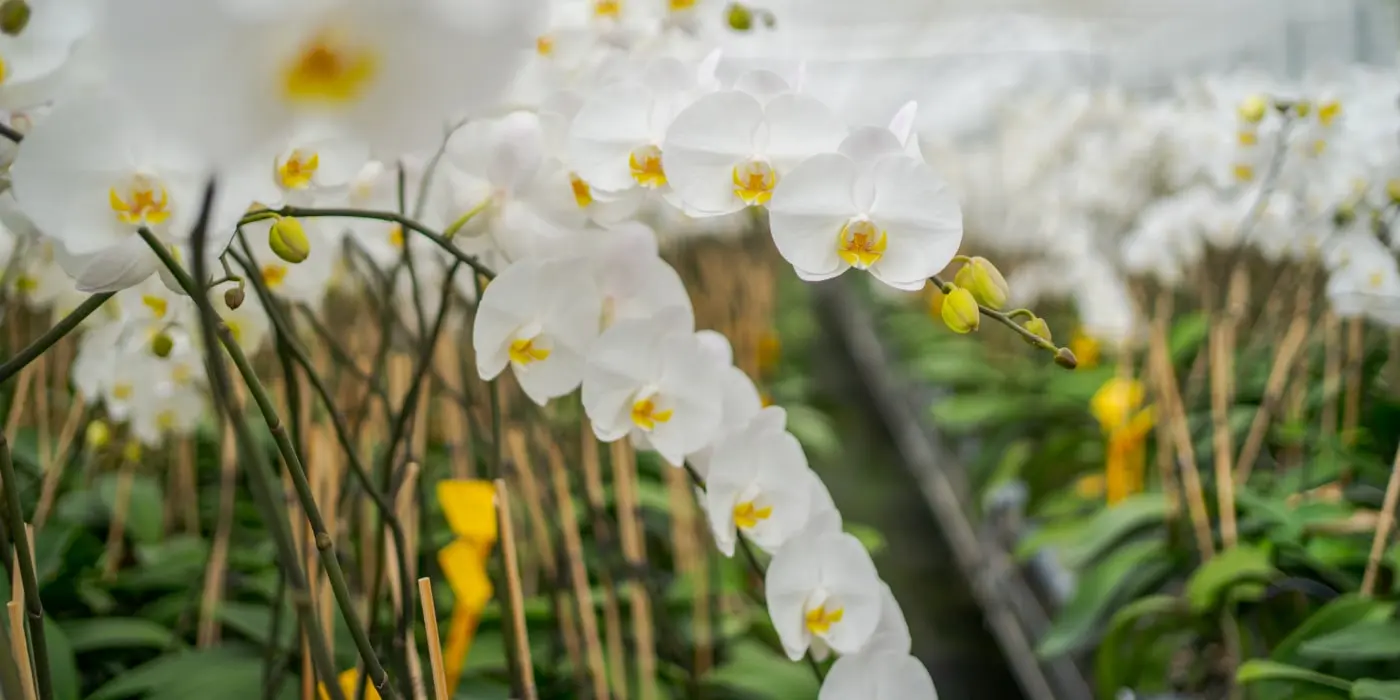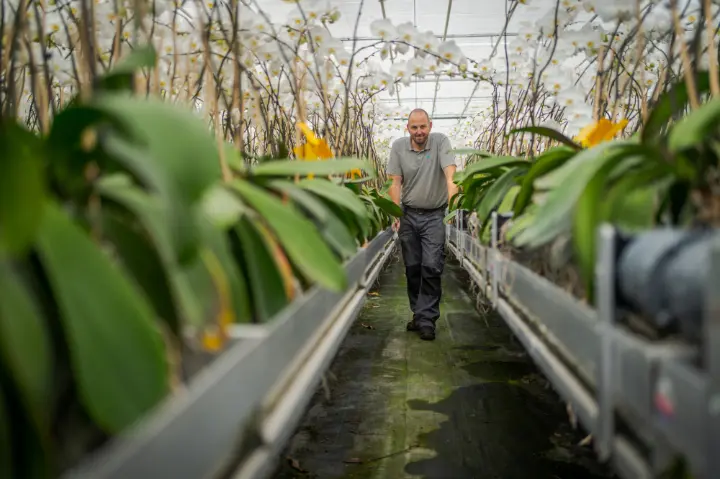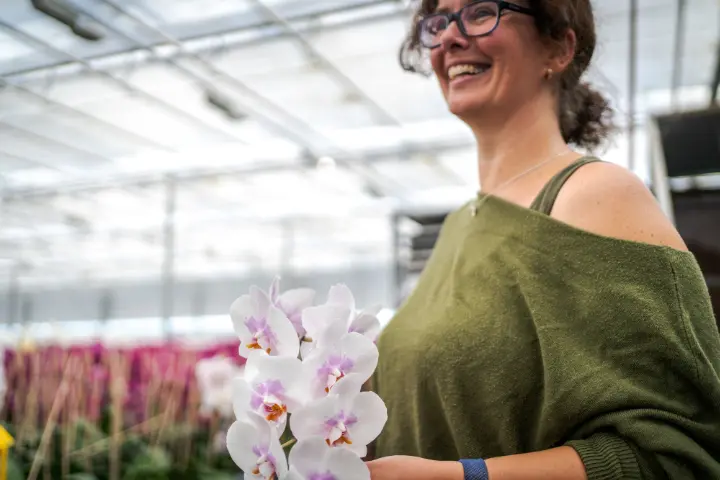
Walking into the Pulcher orchids greenhouse, you're met with a sea of colourful flowers. The majority are white, peppered with purple, yellow, and dark pink. Every few seconds, a fine mist sprays the blooms from the ceiling.
In the next greenhouse over, the flowers are in an earlier stage of their lifecycle. With climates ranging from tropical rainforest to temperate, the conditions inside each greenhouse correspond to the stage of life the flower is currently in and are adjusted with precision to facilitate the plant's growth. Pulcher specialises in producing large-flowered branches of the Phalaenopsis orchid.

"This is the beginning", Ilse says as she points to a tiny plant with roots in the last greenhouse. Her husband Bart took over the company in 2016 and the couple now run it together. The Phalaenopsis, native to tropical rainforests in Asia, New Guinea, and Australia, is a popular flower in the Netherlands. Variants that cannot be found in nature and require careful handling have been developed in laboratories around the world. "The labs are spread over 3 continents; in the event of a disaster such as pandemic the genetical material will be preserved." The young plants are supplied by one such lab in Germany, after which Pulcher raises the plants into colourful ornamental branches that are eventually sold.
The branches sold at Pulcher are grown exclusively for vase life, so they're mainly used in bouquets and arrangements. Their biggest customers are primarily in the wedding and funeral industries. "That means there's always emotion involved. So it has to be just right". When Bart took over the company, he quickly got to work on perfecting the growing conditions. "We take it a bit further than the previous owner. A little colder here, a little warmer there. It has to be optimal."
Bart and Ilse saw more opportunities in the international market. That's how a well-known American artist's extravagant wedding comes to be decorated with thousands of Phalaenopsis orchids from Dongen, North Brabant.

"The Netherlands is known as a flower exporter, so they know where to find us." Logistically, they're also ahead of American competitors. "Our shipments get to New York faster than those from growers in Boston. Because of the time difference, we're working while it's nighttime over there."
Bart was born into a family of gardeners, who had a vegetable nursery in Tilburg, in 1966. "Back then, your vegetables were combined with produce from other growers and disappeared: you couldn't add any value to the product, it was nothing special." Things are different now, but floriculture appealed to him more. "You can put your name on it. You can say it came from Pulcher."
That works both ways. You can just as easily end up with a negative reputation, and that's why Bart is always ready to jump in when things go wrong. "If there's been a problem with a delivery, I jump in the car straightaway to go and make it right."
Creating our website was easy with Webador, so I got exactly what I had in mind.
"Of course, it has an effect on family life", says Ilse, watching as flowers are picked by hand and placed into boxes. "It's crazy here in the mornings - from 6am to 10am it's chaos, getting everything to the auction before 11am." The early hours, the fact there's always something that needs to be done. A former teacher, Ilse now spends most of her time at Pulcher while teaching 1 and a half days per week. "As an entrepreneur, you need to be comfortable in every aspect of the business. We didn't want to hire a website designer, so we decided to do it ourselves. That was an easy goal to achieve with Webador, which allowed me to set up exactly what I had in mind."
Bart and Ilse have also experienced first-hand how difficult doing business can be. "Before you start, you have to wait a year for your flowers to finish growing. Then you're waiting for some money to come in." Taking care of the plants is also a strict process. A small deviation in water temperature or amount of sunlight can have consequences for the flowers. Mistakes are more common in the beginning. "Expensive mistakes, but that's how you learn."
Sign up today - it only takes a few minutes!